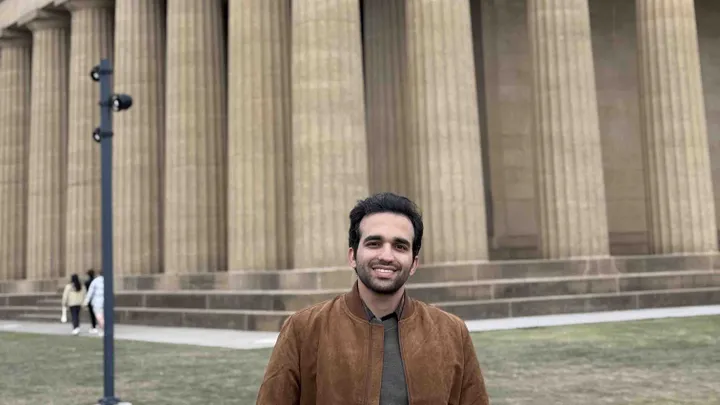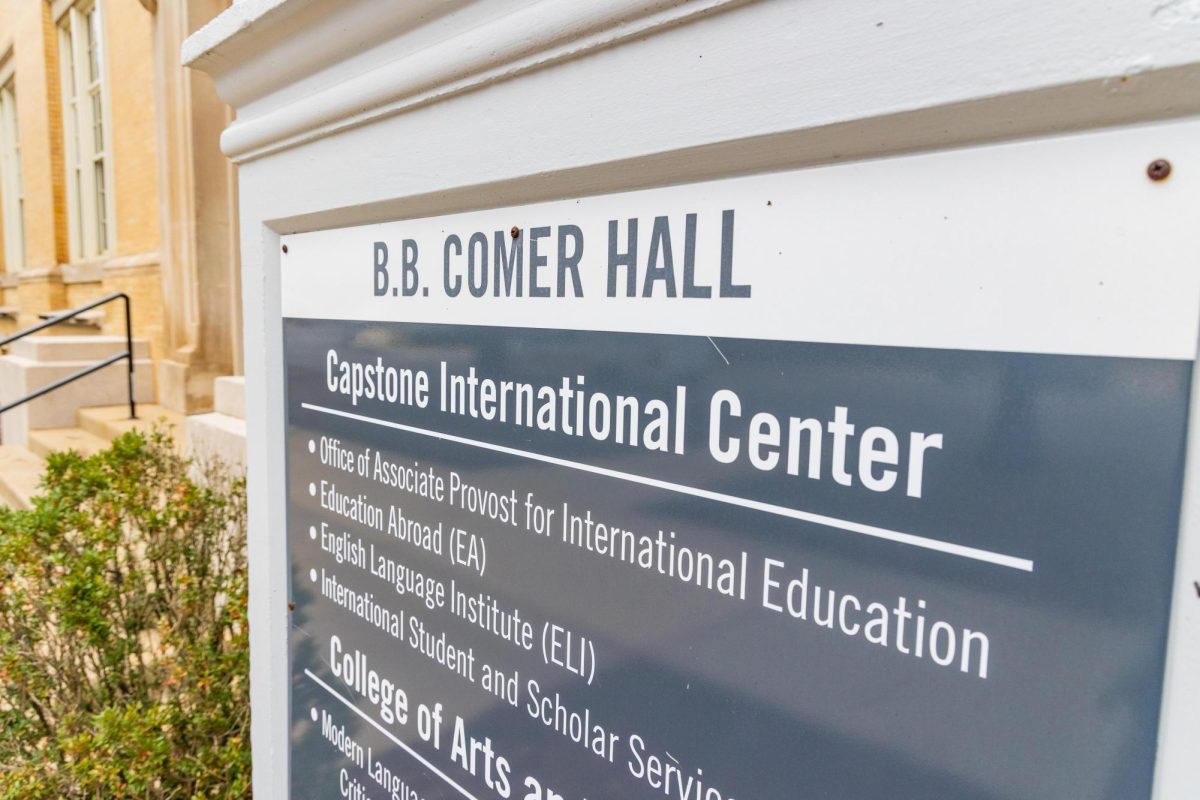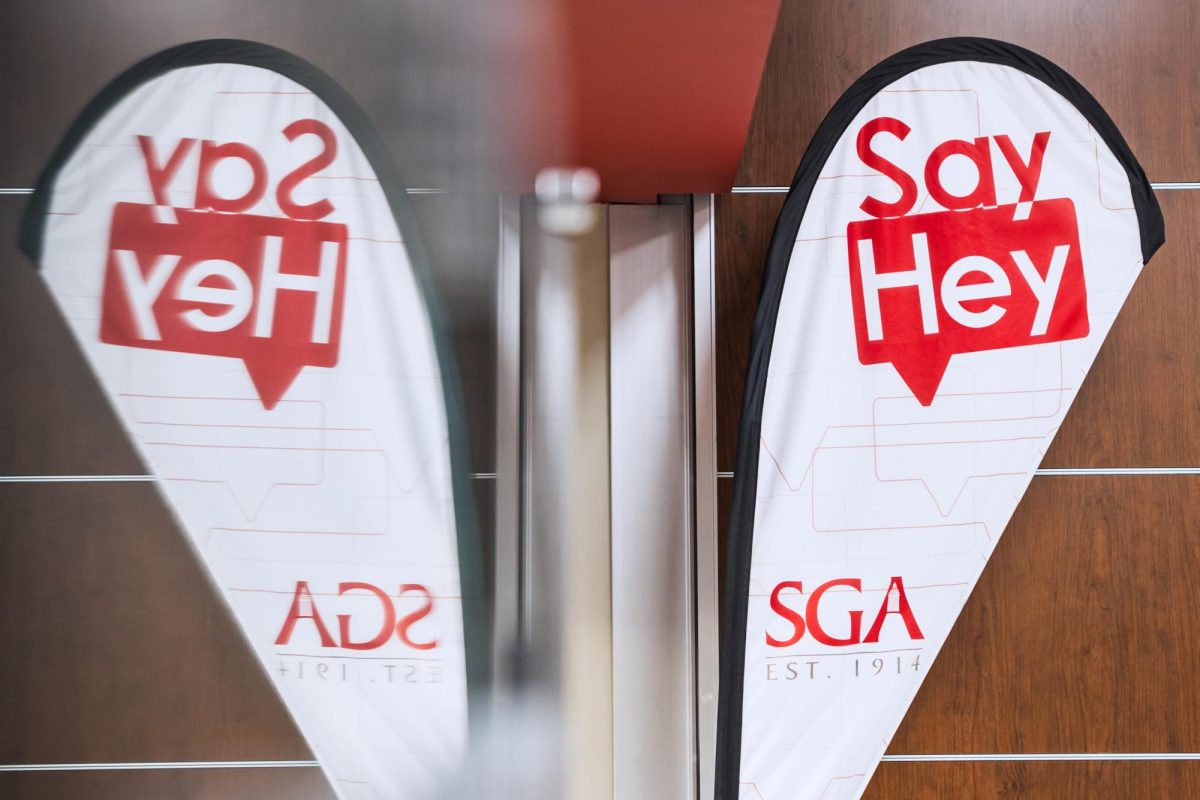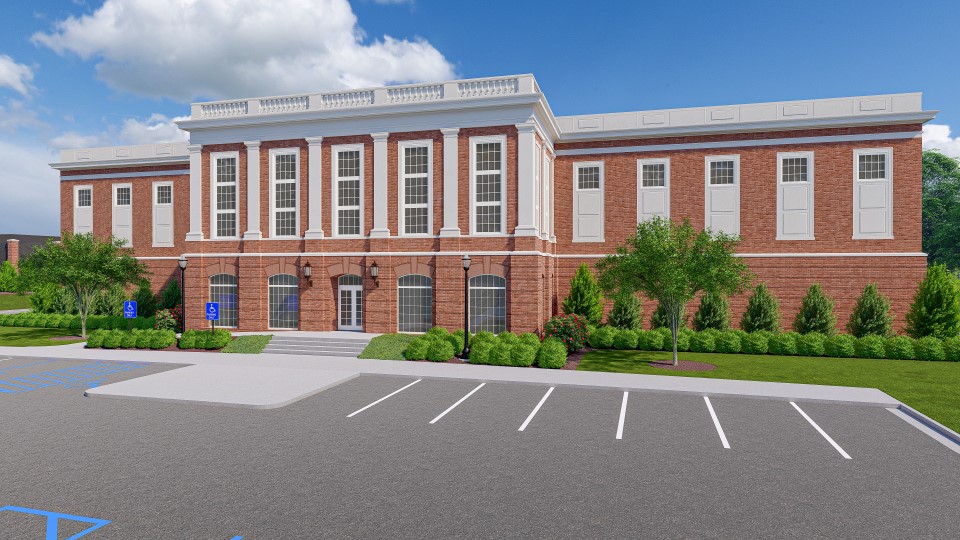The concert hall in the Moody Music Building does not have elevator access to either of the two balconies overlooking the first floor seating area and the stage. Patrons must walk up a flight of stairs to enjoy a bird’s eye view of performances from the likes of the Tuscaloosa Symphony Orchestra and the University Choir.
University Compliance Officer Gwendolyn Hood said the absence of elevator access, meaning that wheelchair-bound and disabled audience members are effectively barred from reaching the balconies, does not violate the 2010 regulations in the Americans with Disabilities Act, originally passed in 1990 to remedy the history of discrimination against disabled persons who “have been relegated to separate and often inferior services.”
Title II of ADA covers public entities such as the University, being an instrumentality of the state of Alabama, and requires that each program of service provided by a public entity, when viewed in its entirety, be readily accessible and usable by individuals with disabilities, according to a 2002 report from the General Counsel Office of Compliance under the United States Congress.
“Every existing facility where programs and services are offered to the public does not have to be made accessible,” according to the report. “However, all programs and services must be made accessible, at alternative sites or through alternative means when necessary, except where to do so would result in a fundamental alteration in the nature of the program, or in undue financial or administrative burden.
“In choosing among ways to make its programs accessible, priority consideration should be given to providing services in a setting that does not segregate people with disabilities from other people.”
Exceptions to Title II standards do exist, however. Historic buildings eligible for listing under the National Register for Historic Places or properties designated as historic according to state or local law can use alternative standards if Title II would “threaten to destroy the historic significance of a feature of the building,” according to ADA.
The Moody Music Building opened in 1988, just two years before the passing of ADA in 1990, and the sole elevator in the building was not designed into the planning of the concert hall, said Skip Snead, director of the School of Music.
“All parts of the main floor are fully accessible to any handicapped audience members,” Snead said in an emailed statement. “The only elevator that exists in the building accesses the second floor, but there is no direct access into the concert hall from the second floor. The concert hall is publicly accessible from the lobby area only.”
The ADA Accessibility Guidelines for Buildings and Facilities, as amended in 2002, requires that a certain number of wheelchair locations be provided according to the seating capacity of a place of assembly, such as Moody’s concert hall.
About 500 seats are on the concert hall’s main floor, and about 250 seats are on each of the two balcony floors, Snead said.
A place of assembly with a seating capacity ranging from 301 to 500 must have at least six wheelchair locations, and a place of assembly with a seating capacity ranging from 51 to 300 must have at least four wheelchair locations.
The two balconies, again, both with seating capacities around 250, do not have any designated wheelchair locations.
Hood said the required number of wheelchair locations under 2010 ADA regulations is based on the total number of seats in an assembly place and not on the separate seating capacities of each floor. So, the approximately 1,000 chair seating capacity of the concert hall means the 10 wheelchair locations solely on the main floor makes the concert hall ADA compliant.
“Also, as indicated previously, any of the seats in the hall are easily removed on rather short notice to accommodate additional spaces as required,” she added.
Rene Katsinas, director of residential services for Capstone Village, the assisted living facility on campus, said senior citizens at the retirement home enjoy visiting the concert hall for the performances. She said wheelchair-bound Capstone Village residents who cannot transfer from their wheelchair to a seat or who prefer not to transfer sometimes sit along the aisle at the end of the row of wheelchair locations in the concert hall.
With damaged cartilage in her right knee, Katsinas said she has more difficulty in walking down the steps that descend from the balconies than in walking up.
“I put both feet on each step before I go to the next,” she said. “If I’m having that problem, then what are people with greater problems experiencing—people with heart problems, with respiratory problems, and look at who attends the concert hall—mostly senior citizens, and anybody above the age of 40 could have joint damage.
“That’s why you have a lot of people who don’t go because they can’t get a ticket on the first floor,” she said in reference to older patrons who might dislike the climbing of stairs because of the physical discomfort that the act produces.
However, Snead said no one has protested the absence of wheelchair access to the concert hall’s two balconies.
“This has never been a problem in 23 years of service to the public, and there is no reason to assume that it will be a problem in the future,” he said. “Our concert hall is fully accessible to handicapped patrons, and we welcome their attendance.”








